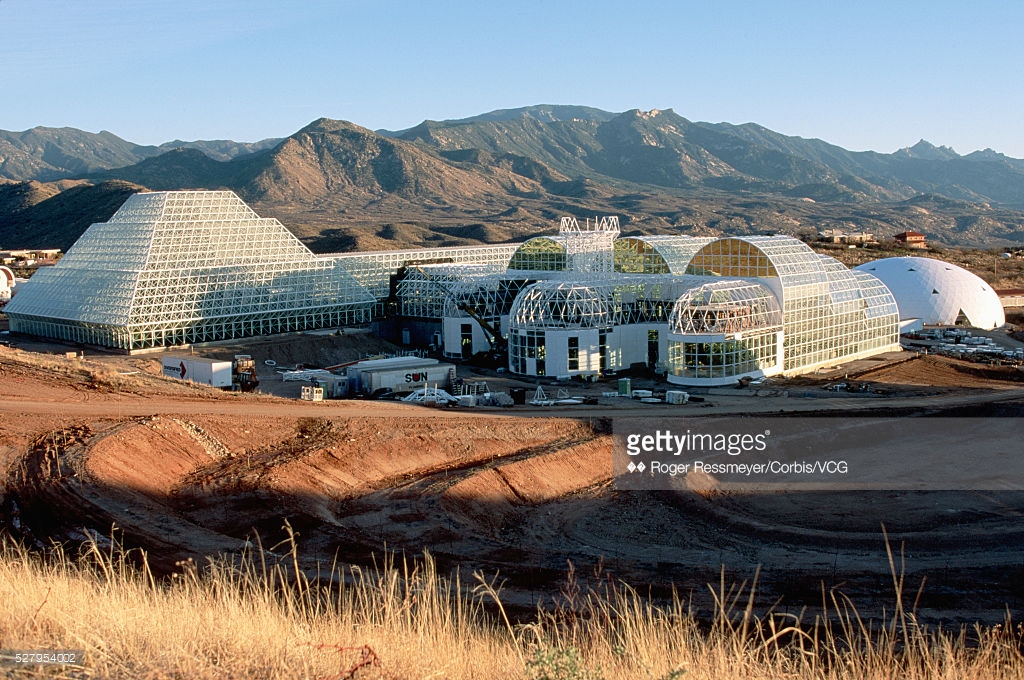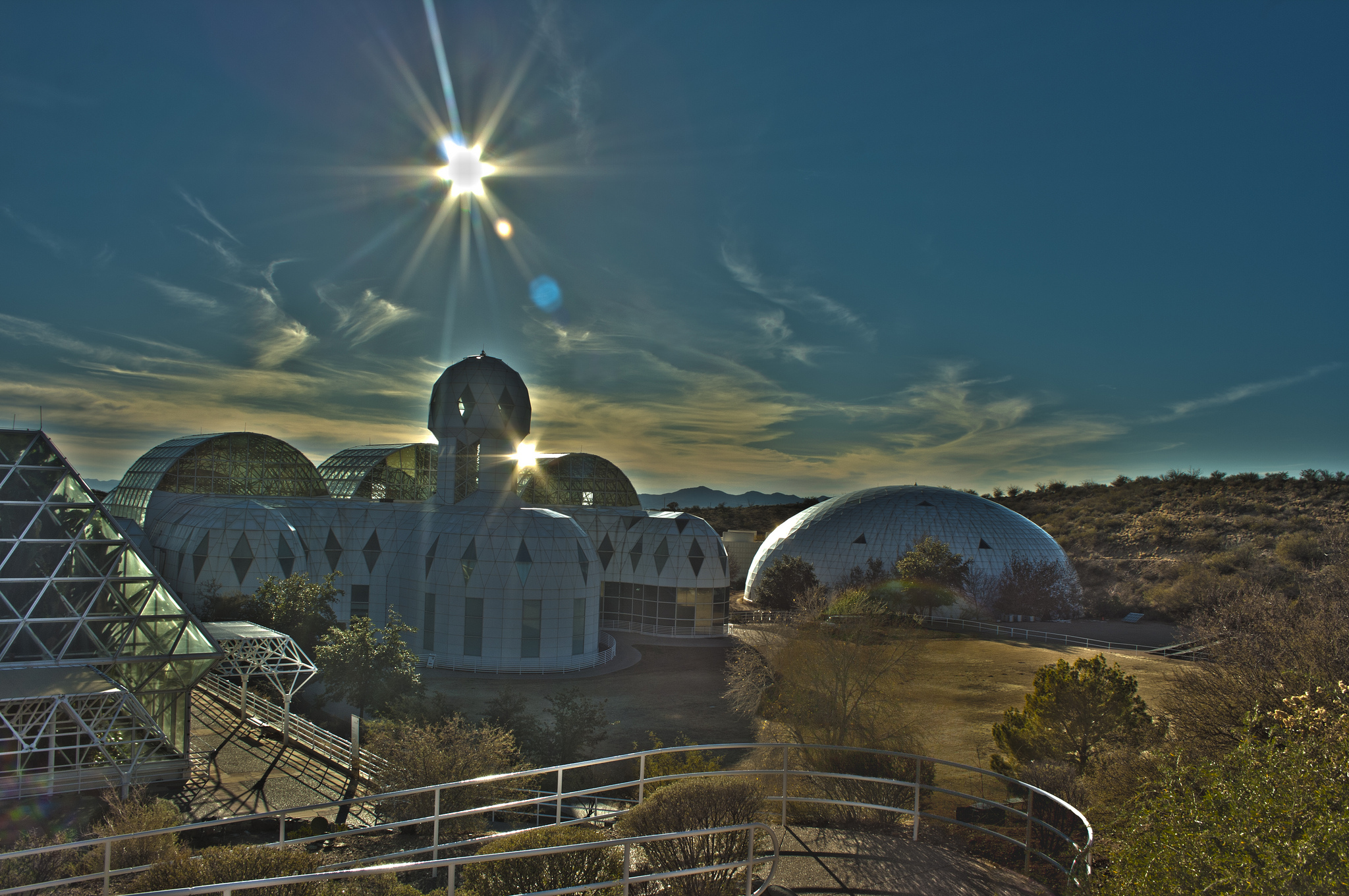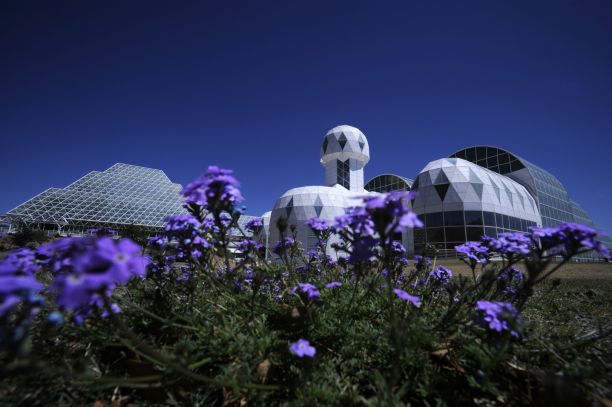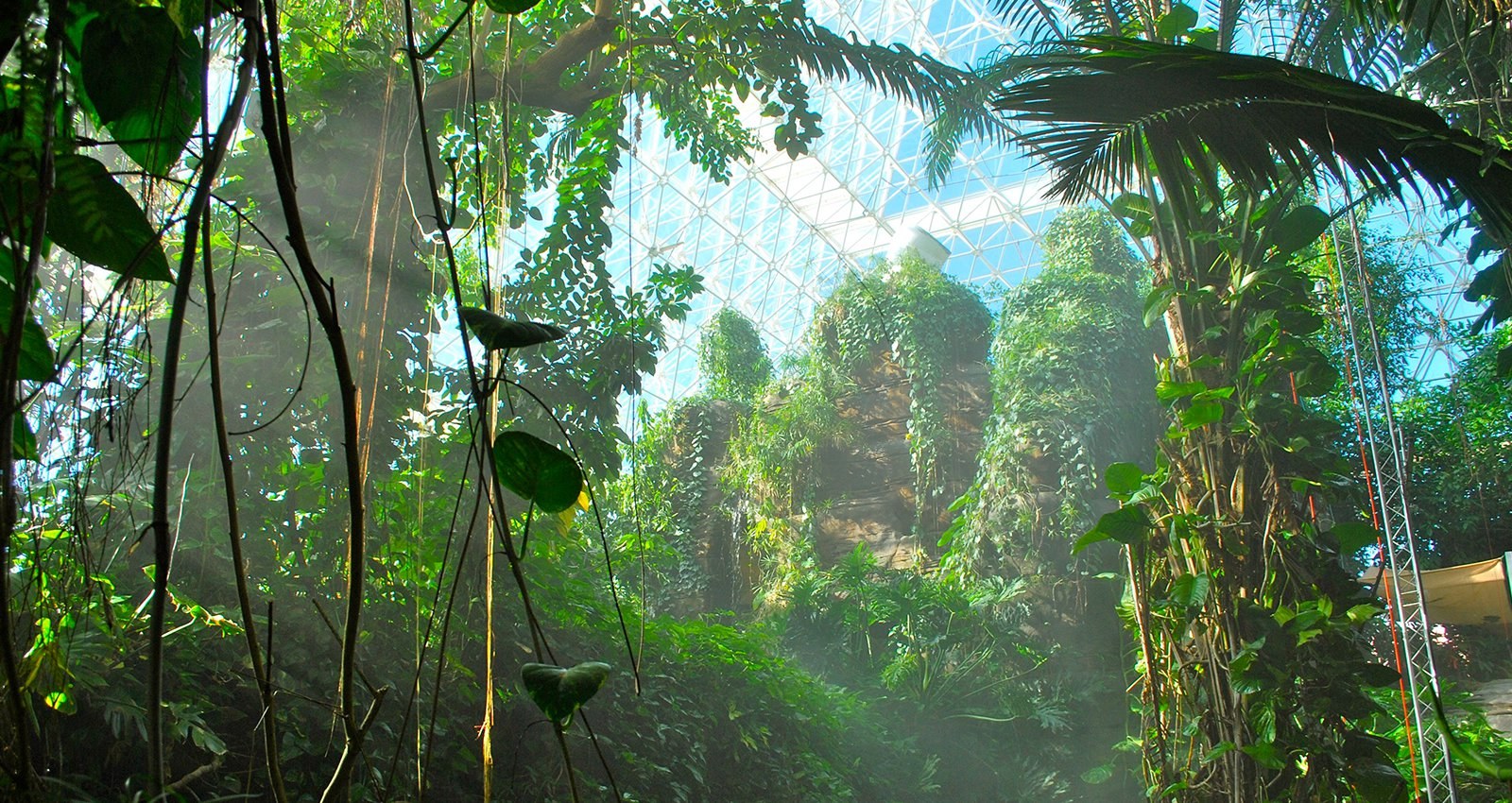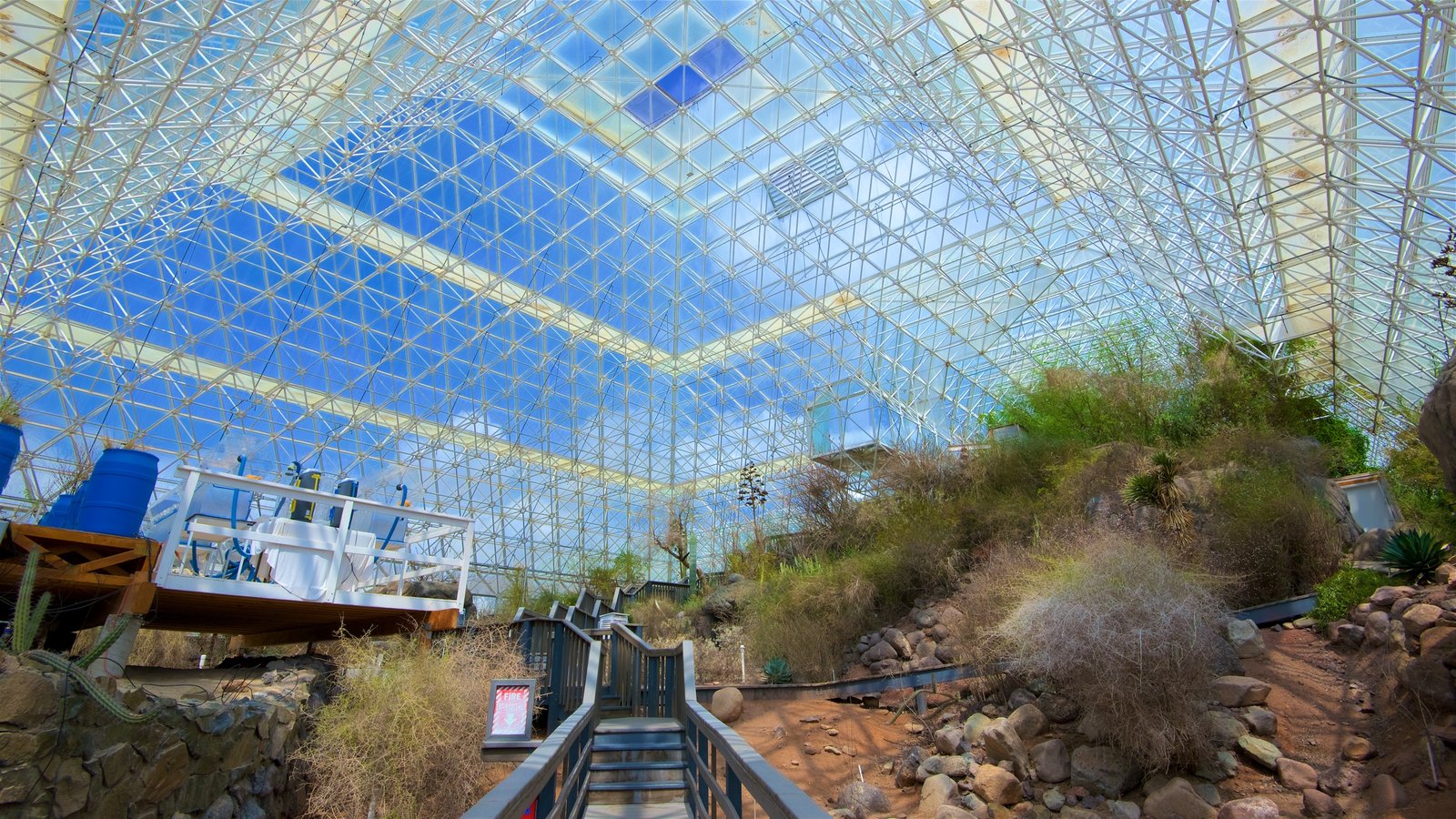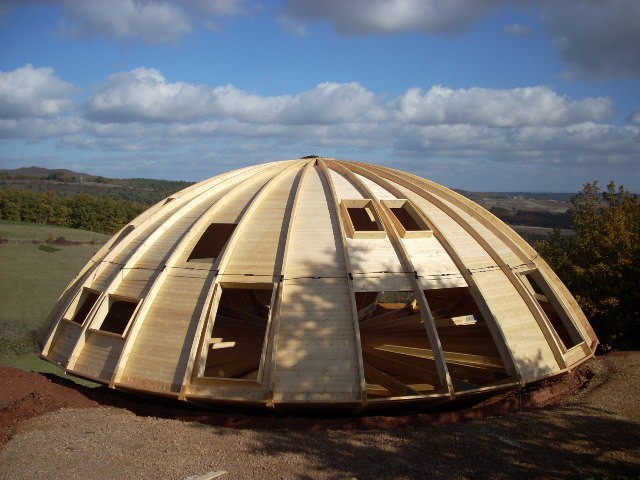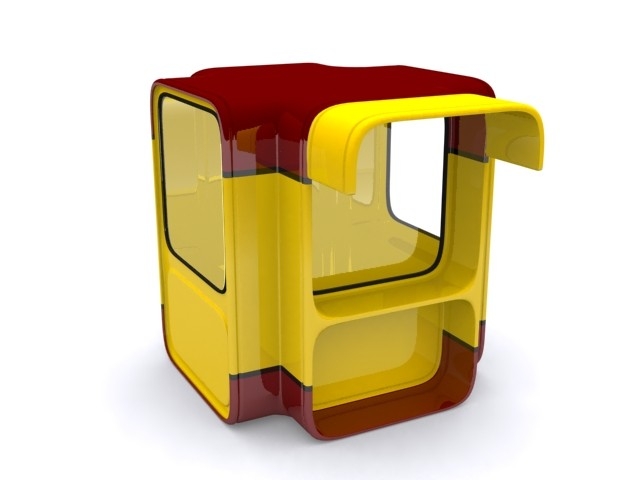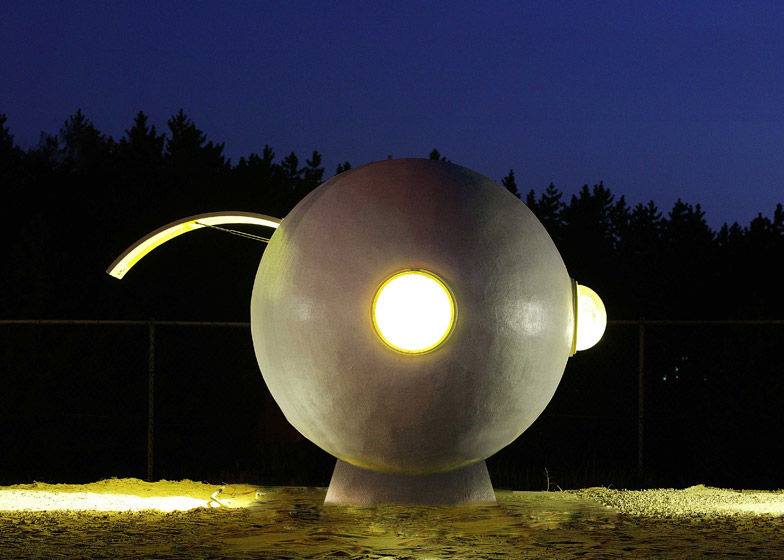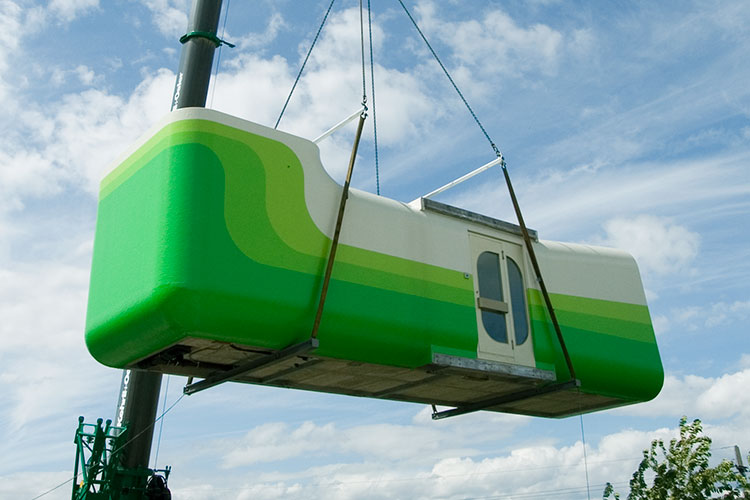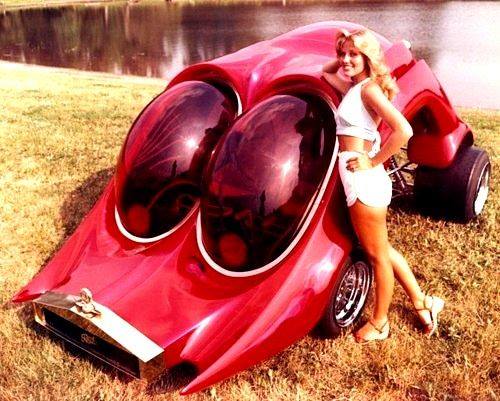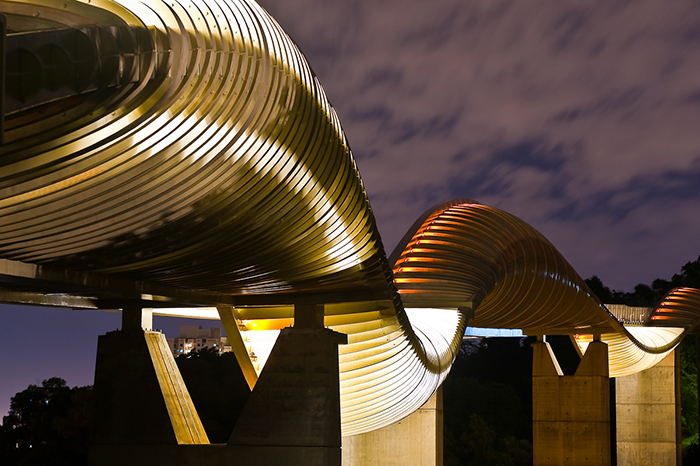The Biospheres 1 and 2 – University, Experimental Site (Arizona)
 Biosphere 1 & 2
Biosphere 1 & 2
Is an experimental site built to reproduce a closed artificial ecological system located at Oracle, in the desert of & rsquo; Arizona.
bordering the Santa Catalina Mountains
Opening date 26 September 1991
Biosphere 2 is an Earth Systems Science Research Center that contains 5 biomes used for the & rsquo; experimentation with large scale ecological.

Most people have heard of Biosphere 2 due to the closed system in the human missions years 1990 where people were sealed with & rsquo; within the structure, while living in autarky 2 years; the second mission ended prematurely at the dissolution of the & rsquo; business management and a fair bit of the drama that has received much publicity.
Since then, l & rsquo; plant was redesigned to function as a flow if the system – which means that & rsquo; it n & rsquo; there is more, a sealed closed system – and now serves as a research vessel for the ecological systems experimentation and & rsquo; education under the direction of the & rsquo; d & rsquo University, Arizona.
Thirty minutes to’ outside Tucson, Arizona is Biosphere 2, the largest center of closed system science research of the Earth never créé.La Earth, of course, is the biosphere 1.
Biosphere 2 is on a plot of 40 acres of land surrounded by mountains and desert landscape – l & rsquo; survivalist ultimate environment.
In the years 1980 a group of scientists and investors together are biomes builds a structure filled with greenhouses, a lively sea, the desert and the rainforest, Savannah and housing for people.
Two controversial mission survivability tested by sealing the people (known Biospherians), the birds, goats and insects in this amazing glass structure.
This project had the noble goals of environmental research, but the goal was greater colonization of & rsquo; space. They hoped to patent a system that could be implemented on d’ other planets. Without a doubt, the inspired Biospherians March One , the next human settlement on Mars.
Failing to grasp the conditions of & rsquo; emergence of life, biochemists and environmentalists have tried to understand what were the mechanisms that kept the biosphere state & rsquo; s balance and & rsquo; it was possible to maintain a “world” living in a closed circuit.
Their idea was to find a solution to the & rsquo; exponential increase in the world population, the gradual disappearance of natural resources and related problems pollution.Aux USA, desert d & rsquo; Arizona is a huge pyramid of glass 122000 m 3 it is the Biosphere project 2.
Upon entering the & rsquo; space for the transplanted rain forest that grows luxuriantly in & rsquo; within the & rsquo; huge glass greenhouse, Bernd Zabel, a “biosphérien” convinced, placed his laptop on a rock that quickly covered small critters that s & rsquo; waved in all directions.
Built in the late 1980, Biosphere 2 was funded by billionaire Texan Edward P.BASS, a passionate patron visonnaire d & rsquo; ecology that gave the center a donation 200 million dollars which resulted in the construction of this futuristic-looking laboratory. The goal of this project is to simulate the terrestrial biosphere, interactions between all components, in an artificial world, copy of the & rsquo; terrestrial ecosystem –

Initially its promoter wanted to determine if men could survive in a high-energy closed environment.
Today & rsquo; hui Biosphere 2 houses 3800 animal and plant species – including some humans – and reproduces the conditions of major terrestrial pairs; Miniature found there a tropical rainforest, coast with its marine life, a desert, a semi-desert area, swamps and savannah.
It also contains on a reduced scale synthetic communities (mésocosmes) isolated coral reefs,
plants and soil types that can be studied as real closed systems.
Jane Poynter unveils two years and 20 minutes that & rsquo; she lived in the biosphere 2 — an experience that the & rsquo; led her to study how to sustain life in the harshest of environments. Held at & rsquo; University of Southern California (University of Southern California), c & rsquo; is the first conference pulled d & rsquo; a TEDx event organized independently.
“At each end of the Biosphere 2 Lab you will see large geodesic dome structures, known as the "lungs" The lungs are the’ One of many great technological achievements of the biosphere 2..
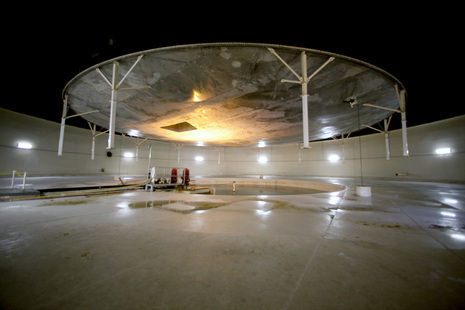
Tunnels d & rsquo; air underground connecting the lungs to the biosphere 2.
A l’ inside the lungs, a giant synthetic rubber membrane with a circular metal disk (the disc weighs 16 tonnes!)
free floating on a cushion of & rsquo; air and goes up and down as the & rsquo; air expands and contracts. ”
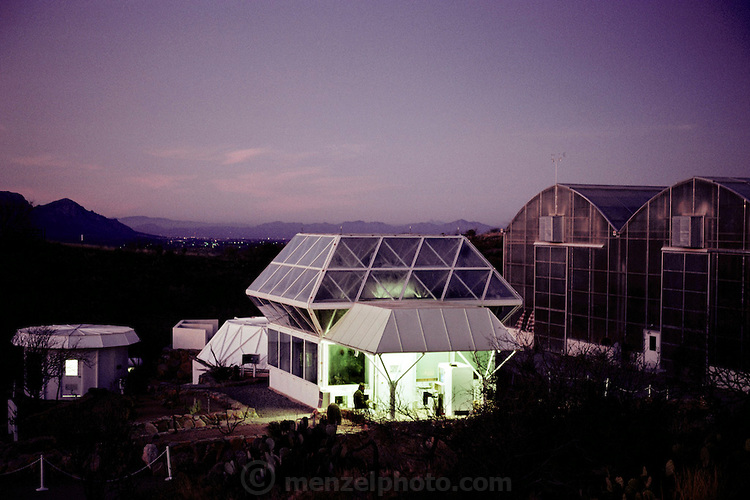
Biosphere project 2 test module building seen in the & rsquo; dawn. Biosphere is a privately funded experiment, designed to explore how humans interact with a small self-sufficient ecological environment, and d & rsquo; explore opportunities & rsquo; future planetary colonization. 1989
Because Biosphere 2 was originally designed to be isolated from the & rsquo; outside environment, it n & rsquo; there is no pressure valves to regulate pressure variations. it is possible, since biosphere 2 is so well sealed, that & rsquo; it could EXPLODE as the sun heats the & rsquo; s air’ inside (This is the desert, after all ), causing the & rsquo; air to grow. It could also implode that & rsquo; air cools and contracts to’ inside. the lungs act as “Variable B & rsquo; expansion” which offset the changes in pressure to’ within the biosphere 2.
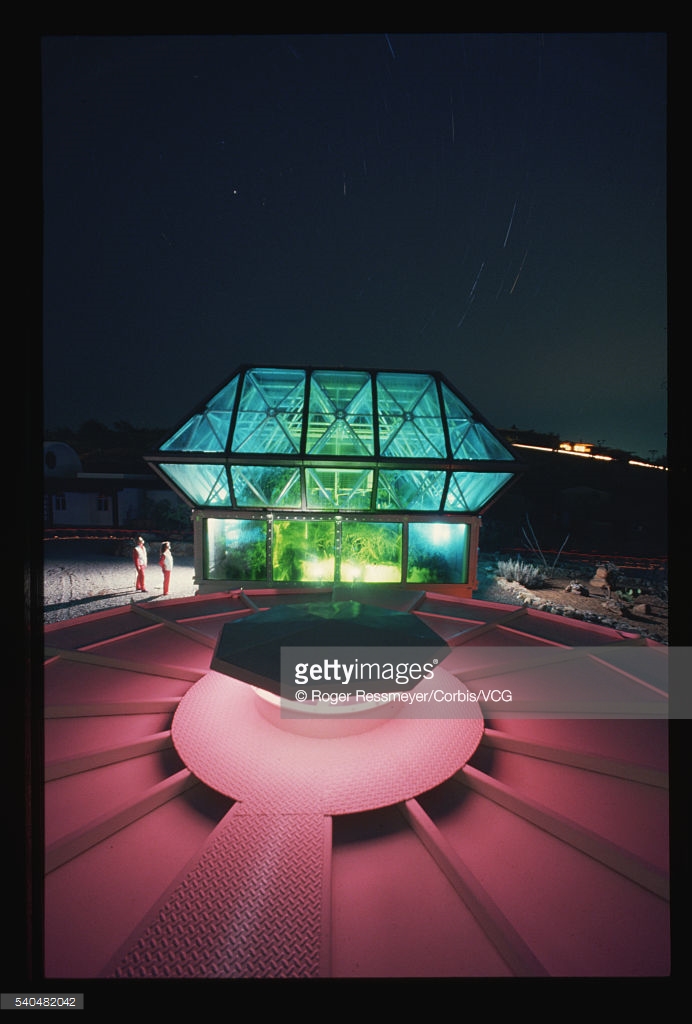 I am fascinated … appeared – Beyond being among There. To me – way through the tour, tour guide opens the door to the & rsquo; outside and you can see the legs of the disc begins to descend, regulating the air content in the biosphere. It felt like watching a foreign ship work.
I am fascinated … appeared – Beyond being among There. To me – way through the tour, tour guide opens the door to the & rsquo; outside and you can see the legs of the disc begins to descend, regulating the air content in the biosphere. It felt like watching a foreign ship work.

Biosphere 2 contains approximately 170000 m 3 d’air, 1500 m 3 d & rsquo; freshwater, 3800 m 3 d & rsquo; seawater and 17000 m 3 terre.Ce of laboratory still represents aujourd & rsquo; the largest controlled growth environment hui.
This closed system contains a high rate of gas, d & rsquo; water and nutrients managed from a control room annex. Biosphere 2 breathe, excretes, heats and cools from & rsquo; d & rsquo a center, external power structure.
The lab can operate in different “configurations” comprising the closed system but also more or less permeable manual and open on & rsquo; outside in order to simulate in vitro the response of the medium opposite to various agents and external influences.

Alert to the & rsquo; oxygen !
In September 1991 shortly after his inauguration, Biosphere 2 announced with a lot of media that & rsquo; a team of 8 Researchers s & rsquo; were deliberately locked in the greenhouse for a period of 4 years. After 2 years, while Biosphere 2 “working” and seemed to & rsquo; shelter climate vicissitudes under her glass roof, the probes have recorded a steady decline in the rate of & rsquo; & rsquo up oxygen, to reach a critical rate. This was d & rsquo; surprising because experts had planted all major producing a series of d & rsquo plants oxygen.
Bernd Zabel who passed 6.5 month in the & rsquo; sealed enclosure with the second team 1994 remember that “physically we were in very good health. We were thin, without fat with low blood pressure. The problem is that we felt lethargic“.
The reason may seem contradictory in a computer controlled chamber but in reality our biosphériens lived on the edge of suffocation !
As everyone knows, l & rsquo; Earth's atmosphere contains 21% d & rsquo; oxygen. In theory, plants and algae growing in & rsquo; inside Biosphere 2 and its million liters of & rsquo; ocean would produce a comparable amount to maintain the medium in equilibrium.
After long hesitation on & rsquo; origin of the phenomenon, its source was identified : soil absorbed the & rsquo; oxygen. C & rsquo; was the breeding ground, an environment rich in nutrients and promoting the growth of plants was also an environment conducive to bacterial growth. Eager d & rsquo; oxygen, they s & rsquo; had increased at the expense of other species and had almost suffocated the entire biosphere !
At & rsquo; s time & rsquo; Zabel incident reminds us of the level of & rsquo; oxygen fell 14.5%.
“Below 14% he added, you could die“.
At the same time the concentration of carbon dioxide s & rsquo; raised. Today (2002) Zabel notes on his computer worth 571 ppm, compared to 350 ppm that & rsquo; we can measure a few kilometers from the center in the Santa Catalina Mountains north of Tucson, THE.
The partial pressure of carbon dioxide is forced but it allows scientists d & rsquo; study the & rsquo; influence of carbon dioxide which soon will face the planet.
To that & rsquo; incident 1994 does not happen again and so that all the arrangements are made for that & rsquo; we can conduct serious scientific experiments, researchers at the & rsquo; Columbia University have discovered that & rsquo; it was at least 10 years for the carbon in the soil is absorbed by micro-organisms, up & rsquo; s what & rsquo; establish a state & rsquo; balance. It n & rsquo; is that & rsquo; once arrived at this stage that the biosphere would be autonomous.
Today & rsquo; hui soils rich in organic matter Biosphere 2 are used in the & rsquo; agro-forestry and rainforest so that higher concentrations of carbon dioxide still appear overnight. But this phenomenon can be reduced by using d & rsquo fans; exhaust.
In the & rsquo; space d & rsquo; a decade the contents of carbon and nitrogen are balanced and are aujourd & rsquo; comparable hui rich soil as found in the American prairie or in a highly organic soil similar to the southeastern United States. whew, the project is saved !
Nevertheless, the lesson of this experience is important. It has alerted scientists to the complexity of the biotic community and the little knowledge we had interactions that s & rsquo; develop there.
We will return in the conclusion.
With dreams & rsquo; one day colonize the’ space, eight people were sealed to’ inside the giant glass biosphere in the desert of’ Arizona 1991. By the time they emerged two years later..
Visit and description ofIt is Biomes (II)
“Welcome to Biosphère Two“, Zabel told me smiling and that & rsquo; the public came to discover this unique laboratory of its kind. While walking on the trails that wind through the greenhouse, Zabel reminds us that in broad lines Biosphere 2 tried to reproduce in vitro the major biomes or eco-regions, of the rainforest to the desert. Only the polar regions n & rsquo; have not been simulated but the cold waters are represented while wet and semi-desert areas are not isolated from other biomes.
Each biome consists of a vast area whose & rsquo; atmosphere is controlled and in which amounts d & rsquo; water, carbon and & rsquo; other compounds are monitored accurately to measure the energy balance of the system and its responses to changes in carbon dioxide concentration or d & rsquo; other climatic factors (such as & rsquo; net carbon exchange, perspiration, gas production in & rsquo; trace, isotopic balance).
L & rsquo; acquisition and data communications are fully automated. L & rsquo; gas exchange between biomes can be measured while fans have been installed to & rsquo; within each mesocom to prevent stratification of the température.Enfin the d & rsquo systems irrigation have been studied so that the & rsquo; water s & rsquo; flows in one direction through the rainforest, the desert biome and d & rsquo; intensive agroforestry.
L & rsquo; ocean
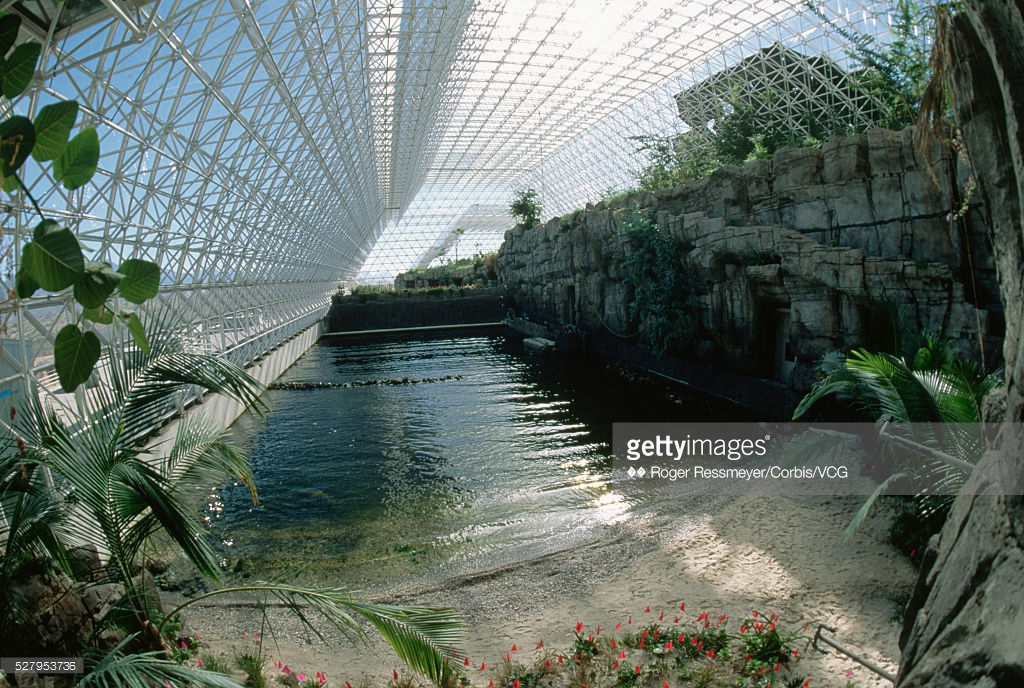 Mesocosm Marine Biosphere 2 is a totally enclosed biome that simulates a Caribbean coral reef (Atkinson et al., 1999). C & rsquo; is a large tank size d & rsquo; d & rsquo a swimming pool, an area of 35 x 20 m, whose depth ranges between 7 m in the middle of the basin within 1 m on the side of the lagoon which is partially separated from the & rsquo; ocean by a reef emerging.
Mesocosm Marine Biosphere 2 is a totally enclosed biome that simulates a Caribbean coral reef (Atkinson et al., 1999). C & rsquo; is a large tank size d & rsquo; d & rsquo a swimming pool, an area of 35 x 20 m, whose depth ranges between 7 m in the middle of the basin within 1 m on the side of the lagoon which is partially separated from the & rsquo; ocean by a reef emerging.
This artificial ocean contains 2.5 million liters of & rsquo; saltwater. A beautiful aquarium that contains dozens of & rsquo; d & rsquo species; animals without talking invertebrates and micro-fauna !
Mechanical systems mimic or replace the natural environmental processes. Physical and chemical parameters such as the mixture, l & rsquo; gas exchange, nutrient concentrations and the partial pressure of carbon dioxide can be controlled independently. It differs from other artificial reef system by its scale and biological complexity.

The animals are not fed and mesocosm is large enough to enable people to develop from internal food chain supported by algae and photosynthetic coral.
L & rsquo; Biosphere ocean 2 is ideal for simulating chemical or biological change on coral reefs. Thus Langdon and his colleagues have demonstrated in the & rsquo; year 2000 the skeletal coral calcification rates would decrease by 40 % during the 21 e century when the concentration of carbonate present in the & rsquo; seawater happen to the balance of atmospheric carbon dioxide that we continue to pour it (more than 54% only for the United States against 8% for the & rsquo; s Germany & rsquo; year 2000).
Rebuilding d & rsquo; an "ocean" in the middle of the desert
676.000 the gallons & rsquo; Biosphere ocean 2 was designed to’ origin in the years 1980 like a coral reef.
But it was expensive to maintain, and the coral is dead. L & rsquo; ocean was under the threat of & rsquo; elimination, but current guardians of the & rsquo; University of’ Arizona has big plans.
They make their ocean in a replica Gulf near California, the mass of water which influences the desert area of the biosphere 2.
Buzz takes you dive in & rsquo; ocean at the Biosphere 2 near Tucson, Arizona. Thank you to Andrew Brown for the filming of the video “dried up”, while Buzz shot the video "wet" for the & rsquo; Arizona Public Media.
Rainforest
Mesocosm or the rainy tropical forest is located in the & rsquo; north end of Biosphere 2 and is a habitat 67000 m 3 consists of a soil textures ranging from dry land to the clay loam (Leigh et al., 1999).
This hot and humid forest s & rsquo; extends over an area of 50 m side and culminates at 27 m high.Wildlife enthusiasts and tropical flora would be delighted to live in this jungle !
This biome planted between 1989 and 1991 is aujourd & rsquo; hui partially mature and has a complex patchwork of different tropical plant species having varied canopies which are all d & rsquo; ideal elements to measure different components of photosynthetic activity.
The rainforest is divided into two sectors : lowland rainforest and the top. C & rsquo; is in this last area that & rsquo; a small mountain equipped d & rsquo; a panoramic station was erected for the public. This was baptized Vista “Tepui”.
This rainforest reduced scale is comparable with d & rsquo forests Amazon (Arain et al., 2000). Experiences (Lin et al., 1998,1999) proved the & rsquo; use of this biome and have unfortunately shown that the rainforest, if it helps to regenerate the ambient carbon dioxide concentration limit, be saturated with carbon dioxide in the middle of 21 e century.
L & rsquo; Agroforestry
At & rsquo; originally the biome d & rsquo; intensive agriculture work in a closed system (Marino et al., 1999).
Today & rsquo; hui silviculture biome (IFB) covers about 2 km 2, it features & rsquo; d & rsquo volume; air 35000 m 3 and d & rsquo; a volume of earth d & rsquo; about 2000 m 3.
The basement has a thickness d & rsquo; about 1m and is held in & rsquo; image & rsquo; a fertile meadow (Torbert et Johnson, 2001). This biome is divided into 3 rooms 33 x 17 m each with its own controls : of carbon dioxide control systems, environmental controls, waves (temperature, relative humidity, light and soil moisture) and continuous monitoring system of gas to the & rsquo; trace.
A forest of genetically identical poplar (Populus deltoides Barr.) was planted in May 1998. Although & rsquo; they are pruned yearly growth rate is dramatic, reaching an average of & rsquo; one meter per month !
These trees are used to measure a number of responses to the & rsquo; ecosystem to elevated concentrations of carbon dioxide (Griffin et al, 2002) and let, between cuts, meet different parameters for soil respiration (Murthy et al, 2002).
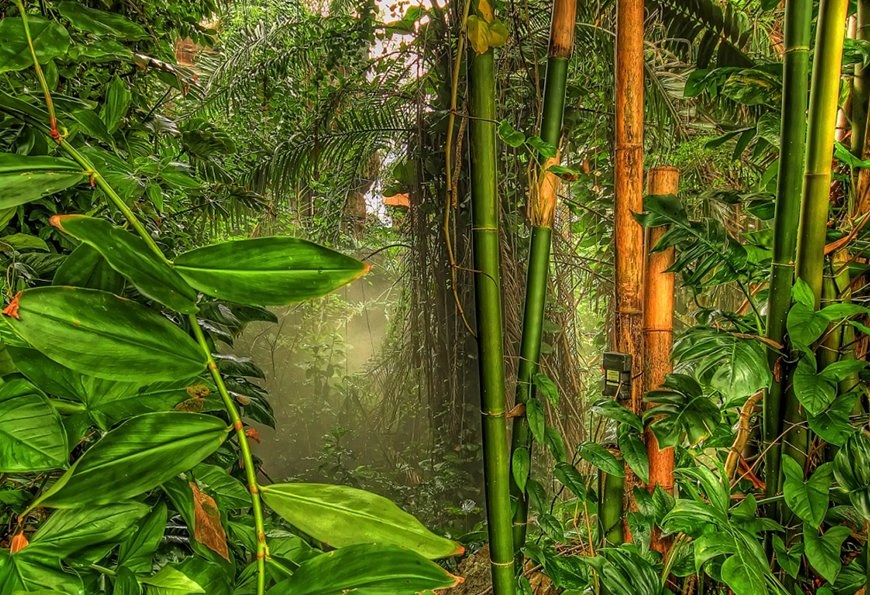
The savanna
Savannah was designed to run multiple functions in Biosphere 2. Its primary objective is to provide a hydrological area of transition between the desert and the rainforest Mesocosms.
The goal is d & rsquo; learn how atmospheric chemistry finds its balance due to changes in hydrological regimes in tropical Mesocosms.
Savannah is a small-scale model of the tropical savannas, reproducing the processes that occur in these ecosystems while retaining the essential details of its biodiversity and aesthetic.
Vegetation zones include edible species, including acacias for galagos, plants with large seeds for finches and fruit trees for the & rsquo; all wildlife.
Savannah is divided into four main regions : a quartzite slope, the upper savannah, a granite slope and the lower savannah. The northernmost section of the savanna consists of & rsquo; a slope built from rocks of quartzite. The fall of & rsquo; water is in this sector.
The upper savannah consists of three zones of vegetation. The fair section located next to the drop d & rsquo; water is composed & rsquo; d & rsquo species, freshwater wetland regions of the Florida Everglades comprising the following species : Cornus woman, Typha domingensis, Salix caroliniana, Crinum americanum, Ludwigia octovalvis et Cladium jamaicense.
The area constituting the gallery forest is dominated by species d & rsquo; Acacia with herbs rather sparse on the lower floors selected from the following species : Andropogon gayanus, Panicum maximum, Paspalum guenoarum, Setaria poiretiana and & rsquo; invasive Brachiaria mutica.
The Billabongs are depressions in the upper savanna. They were designed to be flooded periodically to produce a hyper seasonal habitat. This area alternates bright waters seasons with periods d & rsquo; aridity, eliminating most of the trees but allowing grass to survive.
The Billabongs are dominated by a canopy d & rsquo; consist of grasses Brachiaria mutica and Chloris gayana, containing locally twisted Vigna luteola and lathyroides vines Macroptilium.
The lower Savannah is located southernmost, next to the upper semi-desert area. It is dominated by Brachiaria mutica. D & rsquo; other plants are present in this sector as Dichanthium annulatum, Cenchrus setigerus, Panicum maximum, Sorghum halepense et le Brachiaria decumbens.
Visit and Description of biomes (III)
Swamps
Mesocosm swamp consists of two types of wet areas : a small marsh sector is dominated by different species of & rsquo; herbs while the mangrove area is dominated by mangroves, covering 80% mesocosm. 542 and mangroves 15 trees & rsquo; freshwater shared with the & rsquo; originally a sector 441 m2.
This model d & rsquo; estuary consists of six adjacent sections. The walls separating each section are covered with steel bars in which were laid wide notches 60 cm to allow animals to & rsquo; water to move between sections.
To maximize the diversity of species, different types of communities have been introduced in each of the six sections marshy. In this place, lovers of microscopic life, vivarium and aquarists passionate cyclids and other fish d & rsquo; soft water would be in their world !
L & rsquo; mountainous end model contains a pond d & rsquo; circular freshwater (59 m2). Taxodium distichum, Annona glabra, Salix caroliniana and Myrica cerifera are the dominant trees. The marsh oligohaline (32 m2) is the transition zone between the d & rsquo areas; freshwater and mangrove. Here l & rsquo; Acrostichum danaeifolium, the Spartina spartinae, the Myrica cerifera and Laguncularia racemosa are the dominant plants.
The mangrove area (52 m2) is located in a salt marsh representing the beginning of truly marine environment. This section is dominated by Rhizophora racemosa and Laguncularia.
Black said section of mangroves (72 m2) is dominated by Avicennia germinans. The two northern sections, the oyster compartment (91 m2) and the fringe of the red mangrove (129 m2) are dominated by trees of the & rsquo; species Rhizophora.
Since that & rsquo; it is in equilibrium, the marsh system was colonized by the crayfish, some snails, mosquito fish, of killies, mollies, crabs mud and mangroves, shrimps, amphipods, sponges and anemones.
The diversity of wildlife suffers decline a few years ago, phenomenon may be caused in response to the & rsquo; basin isolation and the & rsquo; absence of tides.
The desert
The desert represents the gradient of climates and vegetation d & rsquo; a humid subtropical arid equatorial region whose purpose is to maintain as high as possible biodiversity.
This biome is used to study fluctuations of biological activities in response to rainfall, so that & rsquo; to research projects of students. But n & rsquo; fear, scorpions, Jig spiders and poisonous snakes n & rsquo; were not introduced in this environment !
In the long term it can be transformed into arid prairie (C3 / C4 competition) in collaboration with the USDA.
Its shape allows d & rsquo; study a relatively simple undulating carpet of vegetation bringing together a patchwork of different soil types and d & rsquo plans; irrigation.
The desert is divided into two zones : the lower desert or semi-desert area (see below) and the upper desert.
Its closed loop operation is ideal for calibrating d & rsquo rate, gas exchange. It also allows d & rsquo; evaluate different concentrations of carbon gas flow according to the & rsquo; photosynthetic efficiency and growth (from & rsquo; isotope distributed in & rsquo; atmosphere and soils).
When & rsquo; it works in semi-permeable fashion the desert sector receives directly from & rsquo; fresh air while & rsquo; stale air s & rsquo; escapes through the rainforest thanks to a fan capable of stirring up & rsquo; to 280 m3 per minute. L & rsquo; air can also be renewed in the mechanical filtering system.
The semi-desert
The semi-desert area located in low-cons desert was designed by Tony L. Burgess to simulate the arid biome limit savannah characterized by dry winters erratic rains and wet summers. To differentiate the desert it supports fresh rainfall during the & rsquo; winter and intense summer drought. This preserves its arid subtropical character while maintaining the biodiversity in this area.
This area was provided for & rsquo; origin to be part of the biome Savannah, but reasons of design and change d & rsquo; s goal & rsquo; have gradually separated from the rest of the savannah.
The semi-desert position next to the desert biome demanded that & rsquo; it is divided into two parts : semi-desert located higher above the d & rsquo room; purification and the lower semi-desert between the d & rsquo room; purification and d & rsquo marsh freshwater. The semi-desert top simulates a relatively old deposit consists of volcanic material similar to that that & rsquo; we find in Sonora Mexico.



Most of the lower semi-desert simulates a stabilized coastal deposit typical Sonora dunes, Baja California, Southern Chile or southwestern Madagascar. Volcanic cones simulated embankments were built along the western side of the semi-desert below to create additional habitat for small animals and ensure a logical transition to artificial cliffs rocks located below the upper semi-desert.
The plants were collected in the vicinity of & rsquo; Alamos and Sonora, two cities located on the border between the semi-desert and tropical deciduous forest of Sinaloan.
Due to their availability,most semi-desert plants are species of Sonoran : Bursera grandifolia (torote mulato), Jatropha cordata (torote de vaca), Fouquieria macdougalii (palo adan) and high trees 6 m like Erythrina flabelliformis (Coral bean) which were transplanted bare root in the semi-desert of Biosphere 2.
D & rsquo; other species were planted even juveniles while some Malagasy succulents were purchased commercially to increase biodiversity
(Alluaudia up, Uncarina sp., Xerisicyos anguyit, Aloe vaombe).
Currently vegetation s & rsquo; is developed to the point that its canopy resembles the prototype websites while species that inhabit the woods seem able to resist the & rsquo; potential invasion of tall grass of the savannah.
Biodiversity appears to be high although & rsquo; it n’ there was no formal comparison with d & rsquo; other semi-desert site.
technical profiles
control and management systems.
Biosphere 2 is managed from d & rsquo; a high-tech control room with a futuristic look.
This nerve center is next to the glass greenhouse and obviously runs continuously.

Solar radiation.
Located at an altitude of 1200 meters above sea level at latitude 32.5 ° N in southern Arizona, Biosphere 2 undergoes regimes & rsquo; temperate desert.
The glass absorbs almost all UV radiation and through structural components the photosynthetic active radiation (RPA) is reduced to & rsquo; about 55%. But the flexibility of the system is such that the RPA is d & rsquo; about 15 moles/m2 per day in winter and 25 moles/m2 per day in summer, higher flows values that s & rsquo; establish a regular greenhouse Biosphere making 2 conducive to research.
atmospheric gases.
A set of probes (carbon dioxide analyzers, temperature, relative humidity and brightness) are used to & rsquo; inside the greenhouse to monitor the composition of the & rsquo; atmospheric and climatic conditions.
Each isolated land mesocosm is equipped d & rsquo; a carbon dioxide injector and d & rsquo; d & rsquo a system; d & rsquo extraction, stale air whose partial pressure of CO2 can vary between 400 ppm (close to current external conditions) at 1200 ppm. Currently the greenhouse contains a concentration of about 571 ppm of carbon dioxide, similar to what should be the & rsquo; d & rsquo terrestrial atmosphere here 70 years according to forecasts, story & rsquo; evaluate the reactions of the biosphere in such conditions.
The path followed by the flow of & rsquo; air in Biosphere 2 does not allow d & rsquo; isolate the biomes of the savannah, the semi-desert and marshes to d & rsquo; study gas exchange. They are only maintained for d & rsquo; other research projects, demonstrations and educational purposes.
A continuous monitoring system of gas from the & rsquo; because of contaminated air 5 liters / min of the rainforest, Savannah, desert and agricultural areas and d & rsquo; an external laboratory.
Dark curtains allow d & rsquo; overshadow demand rainforest while three sections intensive silviculture area can receive three different concentrations of carbon dioxide. When the rain forest is obscured, l & rsquo; & rsquo exchange; air occurs at a rate of & rsquo; approximately 1.4% per hour (nov.1997).
Pression.
when Biosphere 2 operates in a closed circuit, the internal air pressure is kept as close as possible to the external pressure thanks to the & rsquo; use of two variable volume chambers named Biosphere lungs 2, located on the east and west sides of the building. By its variable geometry, This infrastructure allows d & rsquo; d & rsquo avoid, damage the glass structure at too sudden changes in pressure or temperature.
Biosphere 2 is the most hermetic system ever built. During the first two years of operation the leakage rate was 7% per year.
Biosphere 2 Also contains all the modules that & rsquo; imposes a student life or community research : it features & rsquo; d & rsquo a zone, habitat, d & rsquo; a rest room, d & rsquo; a library and of course d & rsquo services Stewardship.
scientific and educational projects (IV)
The first isolated areas Biosphere project began in September 1991 and we saw how it ended in disaster shortly after the & rsquo; have pressurized, d & rsquo fault oxygen.
It was followed by a second equally disastrous program and even shorter which s & rsquo; spread of 1993 at 1994.
Given these somewhat unfortunate experiences, the Biosphere sponsors 2 decided to radically change d & rsquo; goal and made contact with local scientists from & rsquo; Columbia University.
Through a partnership with the department of & rsquo; US Energy, not without having finally solved the question of & rsquo; oxygen, l & rsquo; Columbia University took over the management of the site from 1996. Through its consultative role, she accepted full responsibility for research programs, s & rsquo; education and outreach to the general public.
L & rsquo; University is affiliated with Biosphere 2 for non-commercial purposes through the & rsquo; Earth Observatory Lamont-Doherty (LDEO). L & rsquo; current management agreement running up & rsquo; in 2010 was extended.
L & rsquo; s Columbia University & rsquo; endeavored to renovate facilities to d & rsquo; optimize & rsquo; use of Biosphere 2, offering in particular to researchers and students an ideal site for the experimental study climate and global change on biotic.

C & rsquo; is that so & rsquo; over time Biophère 2 was transformed into a vast network of prototypes through which researchers can assess the reactions of ocean environments, terrestrial and atmospheric and the feedbacks that s & rsquo; established between these systems and their interfaces (beach, treetops, etc).
C & rsquo; is carbon dioxide which is the & rsquo; object of the most comprehensive studies.
Researchers from & rsquo; Columbia University remind us that the ice raised the poles indicate that & rsquo; air contained 200 ppm of carbon dioxide there 14000 years, in & rsquo; era of the last glaciation.
Because d & rsquo; natural events (forest fires, volcanism) and human activities that level increased slightly, reaching 280 ppm threshold of & rsquo; industrial age to its current level.
Today & rsquo; hui with a concentration of carbon dioxide 571 ppm, 71% greater than its real value (408 ppm 2016), Biosphere 2 works a bit like a machine back in time, simulating the concentration of carbon dioxide that the Earth should present 70 years if we continue to burn fossil fuels as our forecasts.
Biosphere 2 allows d & rsquo; study the future of climates, how the rainforest meets the & rsquo; increase of carbon dioxide and how it can help us. The researchers have already constasté that & rsquo; increase of carbon dioxide accelerated plant growth. A priori ca may seem like good news but be aware that all plants do not react the same way. What are the plants that will benefit the & rsquo; d & rsquo future; a richer environment CO2 offers Biosphere 2 l & rsquo; d & rsquo opportunity; to be a scientific resource first value.
The public meanwhile is delighted with this change d & rsquo; target. With society McBride Corp.. specializes in the design of recreation centers and museums, Biosphere each year 2 receives some 180000 Visitors enthusiasts & rsquo; d & rsquo ecology or, astronomy who also enjoy visiting the Kitt Peak observatories and Meteor Creater located in the region.
Motivated students can also be follow academic programs whose & rsquo; essential school fees, some $ 15,000 / semester, is paid by public grants. It teaches high school students, university graduates or the earth sciences, s & rsquo; universe and there can make applied research in climatology, ecology, écophysiologie, Marine biology, thermodynamics, etc..

L & rsquo; future
L & rsquo; population explosion of ants subtly illustrates how changes that occur in a part of & rsquo; s environment can & rsquo; amplifying everywhere and unexpectedly.
At the first Biosphere Experience, it n & rsquo; that there are three species that & rsquo; we will say endemic ants.
Most of these insects, as well as 19 on the 25 vertebrate species are extinct.
Only a few predators such as ants, cockroaches or grasshoppers survived and dominated the other species.
Ants are aujourd & rsquo; hui so discéminées through Biosphere 2 scientists do not want to eradicate them before understanding their role in this artificial ecosystem, which seems to be very important.
By introducing the ants in this folder, that good numbers of visitors would have swept the back of the hand without asking questions, we demonstrated how Biosphere 2 has become an important research center for all disciplines that relate to Earth Sciences, especially in & rsquo; Columbia University. It facilitates applied research and the & rsquo; global change study, a bridge between theoretical research and field studies.
Biosphere 2 offers a unique opportunity for researchers d & rsquo; study the responses of different levels of the biosphere, allowing them to & rsquo; evaluate their models for the up & rsquo sheet; the landscape taken in its entirety. Biosphere 2 also studying global biological aspects of the Earth much less well controlled sciences such as & rsquo; study of ecological reserves in the long term (LTER) and sources of & rsquo; enrichment & rsquo; atmospheric carbon dioxide (FACE). This allows researchers to work on a compressed time scale, teaching them how to use and optimize such systems.
In addition to the new disciplines that are proposed to Biosphere 2 (cophysiologie land plants, biological Oceanography, study of stable isotopes, Remote sensing, etc) it is expected that Biosphere 2 evolving into a multi-user Service, engaging local research teams, national and international. Advice to the reader !
With the & rsquo; & rsquo alert to; oxygen 1994, the scientists had to admit their ignorance of the Earth; they ignored – and yet ignore – the interactions between all living beings and their ecosystem. We know for example that tropical forests are very sensitive to the & rsquo; evolution of the biosphere but we do not know how d & rsquo; it is home to species and all interactions that s & rsquo; established between these communities.
Leaving Biosphere 2, Zabel as most visitors feel a sense of anger at the little & rsquo; ecological actions that our policies materialize over the legislature but also to ourselves that are often unscrupulous to the preservation of nature.
All researchers involved in this problem are d & rsquo; notice that & rsquo; it is time d & rsquo; learn to manage our biosphere if we wish to preserve. Our impact on the environment is disproportionate. Today & rsquo; hui we consume 40 times more d & rsquo; that energy & rsquo; an animal in our weight and we occupy on Earth 30 Once the & rsquo; space that we should use under the laws of natural selection. We escaped the & rsquo; lady influence Nature, but n & rsquo; not forget that out of sight, we are also far from the heart of the problem. Have we forgotten our duty to Earth ? If we can find refuge with Gaia, we saved the planet.
The most important lesson offered by Biosphere 2 ultimately lies not in & rsquo; within this single structure, but to the & rsquo; outside. Leaving my host and through the sealed airlock, know how I feel again the intense blast of & rsquo; warm, dry air of & rsquo; Arizona. Before closing the airlock door d & rsquo; entrance behind him, Zabel took a deep breath of & rsquo; s Air & rsquo; outside and said, smiling : ” Biosphere 1 is still the best.”
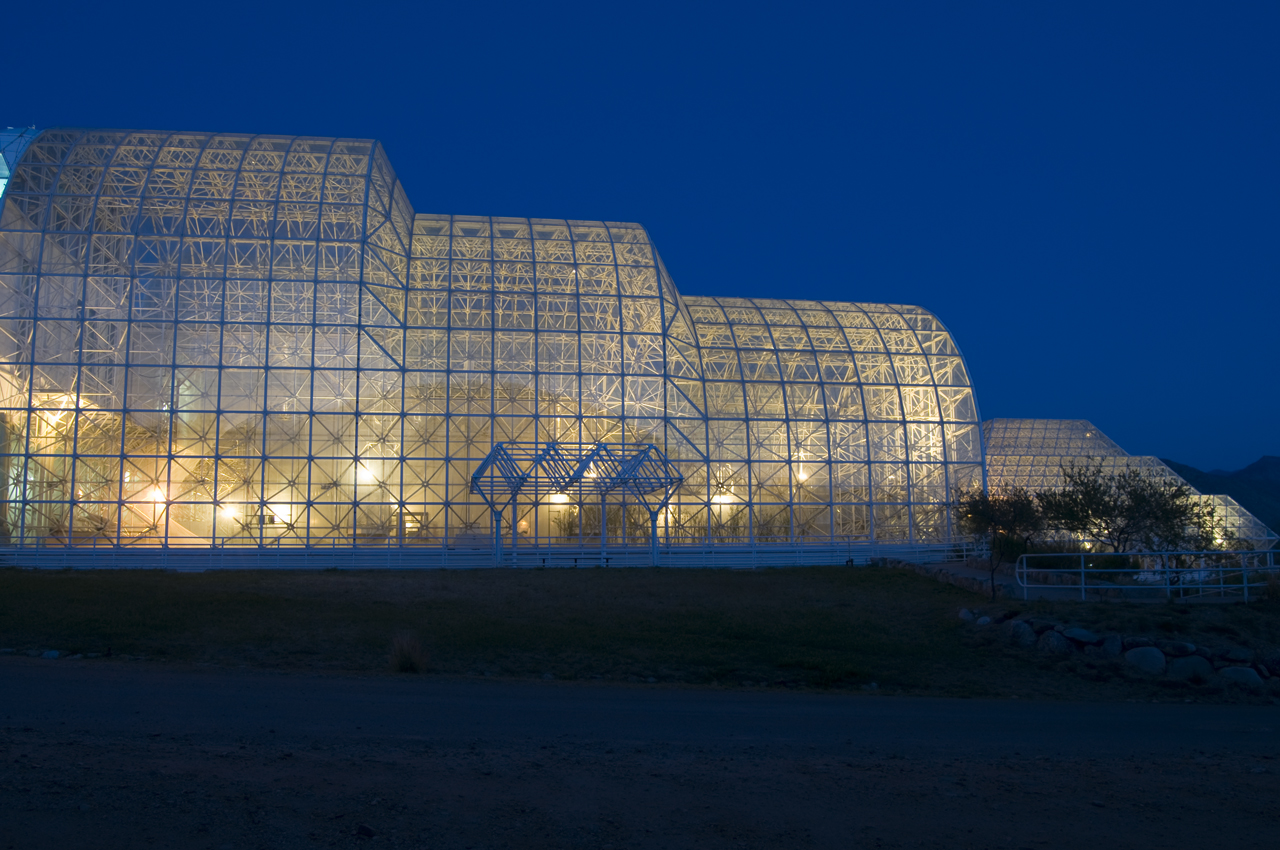



Biosphere 2 Construction project d & rsquo modules seen trying to & rsquo; dawn…
The Biosphere was an experiment funded by the private sector, designed to explore how humans interact with a small autonomous ecological environment and to explore opportunities for future planetary colonization. Biosphere 30 million covers 2,5 acres near Tucson, Arizona, and was entirely self. The 8 Biosphériens shared their sealed world in & rsquo; air and the & rsquo; with water 3 800 plant and animal species during their two-year stay in the building, producing all their food and supporting the & rsquo; environment in five "biomes"; Agriculture, tropical forest, savane, ocean and marsh (1989).

Reportage 6:37
Arconsanti Tribute to Paolo Solare.
by Jérôme Sadler




